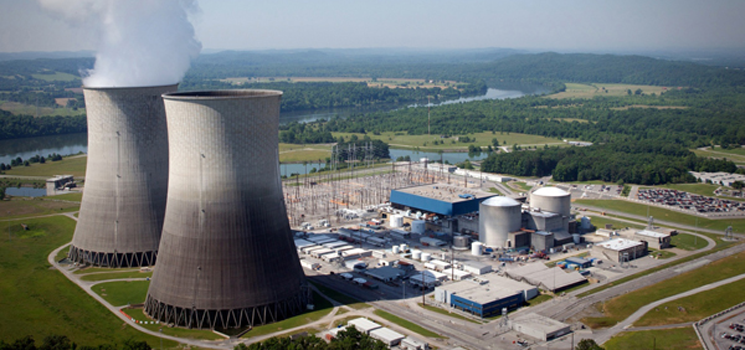The details of how nuclear energy works has been discussed in previous posts, but as a refresher, the following paragraph is a summary.
A nuclear reactor produces electricity in much the same way other power plants do. Some form of energy creates heat, which turns water into steam. The pressure of the steam turns a generator, which produces electricity. The difference is in how the heat is created. Power plants that run on fossil fuels burn coal, oil or natural gas to generate heat. In a nuclear energy facility, heat is produced from splitting atoms – a process called nuclear fission. Enriched uranium is the fuel for nuclear reactors. Uranium is an abundant, naturally radioactive element found in most rocks. As uranium breaks down or decays, it produces heat inside the Earth’s crust. A similar process generates heat inside a nuclear reactor. The image below is a graphic representation of the production of nuclear energy.
Globally, there have been at least 99 (civilian and military) recorded nuclear power plant accidents from 1952 to 2009 (defined as incidents that either resulted in the loss of human life or more than $50,000 of property damage, the amount the US federal government uses to define nuclear energy accidents that must be reported), totaling $20.5 billion in property damages. Property damage costs include destruction of property, emergency response, environmental remediation, evacuation, lost product, fines, and court claims. Because nuclear power plants are large and complex, accidents on site tend to be relatively expensive. The International Atomic Energy Authority ranks them using an International Nuclear Events Scale (INES) – ranging from ‘anomaly’ to ‘major accident’, numbered from 1 to 7. Some of the worst accidents include:
>Chernobyl, Ukraine- INES Level 7, 1986
>3 Mile Island, Pennsylvania- INES Level 5, 1979
>Fukushima, Japan- INES Level 7, 2011
References:
1. ENEC
http://www.enec.gov.ae/learn-about-nuclear-energy/how-does-nuclear-energy-work/#nuclear-fission
2. The Guardian
http://www.theguardian.com/news/datablog/2011/mar/14/nuclear-power-plant-accidents-list-rank
3. Wikipedia- List of Nuclear Power Accidents By Country
https://en.wikipedia.org/wiki/List_of_nuclear_power_accidents_by_country#cite_note-bksaccident-7
4. Take Part
http://www.takepart.com/photos/11-worst-nuclear-accidents/windscale-pile-great-britain-ines-level-5-1957


This is very informative and explains what nuclear energy is very well. I really like the diagram that you included because it supports the points you were talking about and helps visualize.